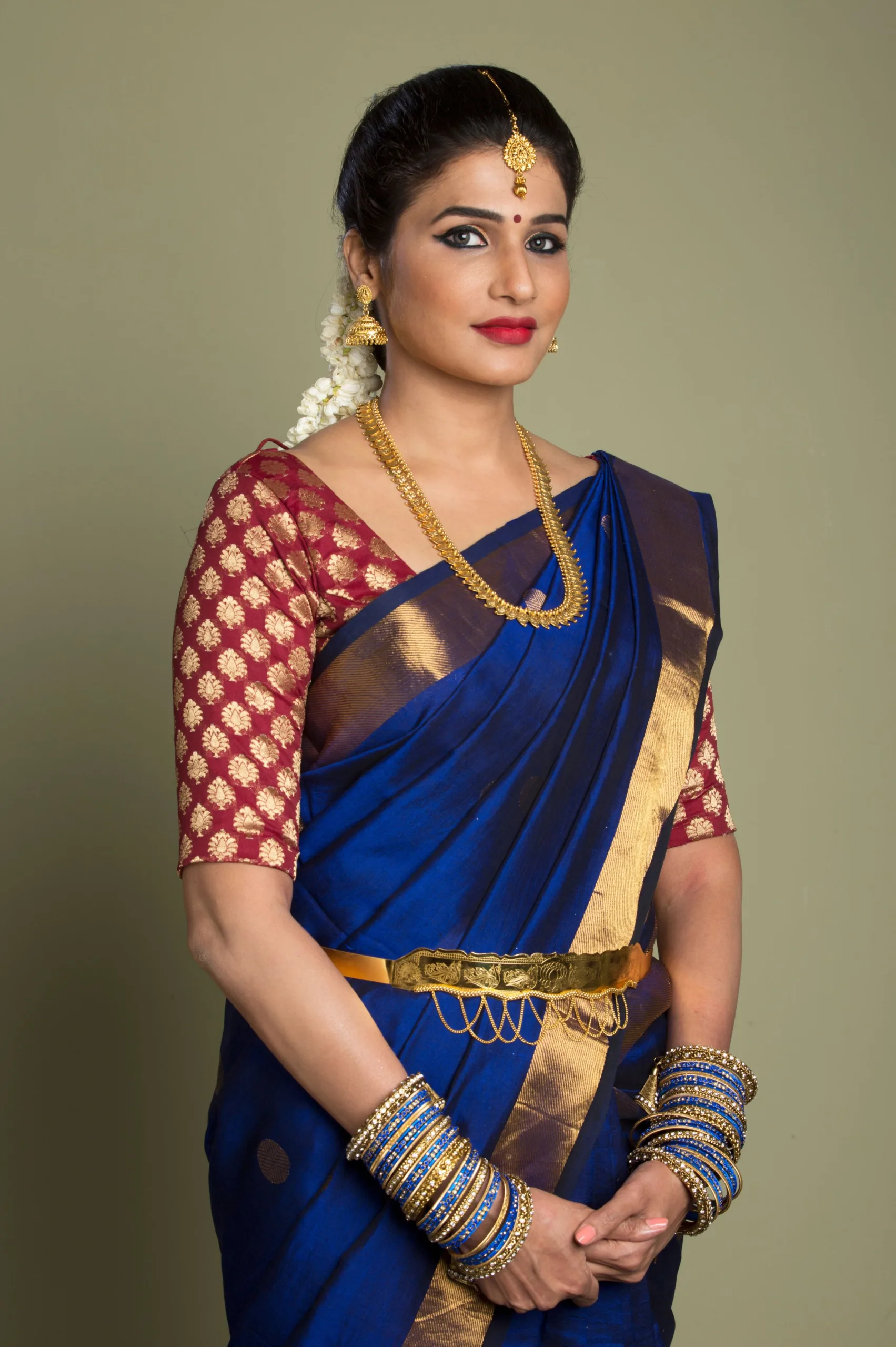In traditional Indian sarees, the Kanjivaram and Benarasi sarees stand as timeless icons of elegance and cultural heritage. Both sarees are celebrated for their intricate craftsmanship, luxurious fabrics, and captivating designs. While they share certain similarities, they also possess unique characteristics that set them apart. This article will delve into the world of Kanjivaram saree and Banarasi silk saree, understanding their differences and celebrating the artistry behind these cherished garments.
Benarasi Silk Saree: The Resplendent Weaver’s Art
Origin and Location
The Banarasi or Benarasi saree derives its name from Varanasi (formerly known as Banaras), a city in the northern state of Uttar Pradesh, India. Banaras is famed for its rich weaving heritage and is considered one of India’s oldest textile production centres.
Fabric and Texture
Benarasi sarees are crafted from fine silk, usually mixed with gold or silver zari threads, resulting in a rich and luxurious fabric. The silk used in Benarasi sarees is known for its smooth texture and beautiful drape, making it an elegant choice for weddings and grand occasions.
Zari Work
Similar to Kanjivaram sarees, Benarasi sarees also feature elaborate zari work. However, the zari in Benarasi sarees is typically made from fine silk threads coated with gold or silver. Its intricacy and delicate detailing characterise the zari work in Benarasi sarees.
Design and Motifs
Benarasi sarees are known for their regal and grand designs, often featuring Mughal-inspired motifs such as floral patterns, foliage, and intricate intertwining vines. The pallu and border of Benarasi sarees are adorned with intricate zari work, making them an opulent choice for special occasions.
Kanjivaram Saree: The Epitome of South Indian Elegance

Origin and Location
The Kanjivaram saree originates from Kanchipuram in Tamil Nadu, South India. Kanchipuram is renowned for its skilled weavers who meticulously craft these exquisite sarees, earning them the title of “Queen of Silks.”
Fabric and Texture
Kanjivaram sarees are crafted from pure mulberry silk, renowned for its lustrous texture and durability. The silk used in Kanjivaram sarees imparts a luxurious feel to the garment, making it a prized possession for weddings and special occasions.
Zari Work
The hallmark of a Kanjivaram saree lies in its intricate and opulent zari work. Genuine Kanjivaram sarees feature zari made from real gold or silver threads, carefully woven into the fabric. The zari work is often heavy and ornate, displaying traditional motifs, temple architecture, and nature-inspired designs.
Design and Motifs
Kanjivaram sarees boast many designs, from traditional checks and stripes to contemporary geometric patterns. The pallu (the loose end of the saree that drapes over the shoulder) and border are usually the focal points of the design, featuring elaborate zari work that complements the overall look.
Distinguishing Features: Kanjivaram versus Banarasi
While Kanjivaram and Banarasi’s sarees share the essence of timeless elegance and craftsmanship, they have distinct characteristics that set them apart.
Origin and Region: Kanjivaram sarees originate from Kanchipuram in Tamil Nadu, while Benarasi sarees are in Varanasi, Uttar Pradesh.
Silk and Zari: Kanjivaram sarees are made from pure mulberry silk with genuine gold or silver zari work. Benarasi sarees, on the other hand, use fine silk with gold or silver-coated zari threads.
Motifs and Designs: Kanjivaram sarees often feature traditional designs and temple-inspired motifs. Benarasi sarees are renowned for their Mughal-inspired designs, featuring intricate floral patterns and weaving techniques.
Texture and Feel: The texture of Kanjivaram sarees is characterised by its luxurious feel and lustrous drape, while Benarasi sarees are known for their smooth and rich fabric.
Conclusion
Kanjivaram saree and Banarasi silk saree are treasured in traditional Indian fashion. These sarees’ elegance, craftsmanship, and cultural significance make them popular for weddings, festivals, and grand celebrations. One of the most popular search terms is Banarasi silk saree for wedding. While both sarees share certain commonalities, they also have unique attributes that distinguish them from one another. Whether you choose a Kanjivaram saree from the south or a Benarasi saree from the north, both will undoubtedly exude timeless beauty and grace, celebrating the artistry and heritage of Indian weaving traditions.
